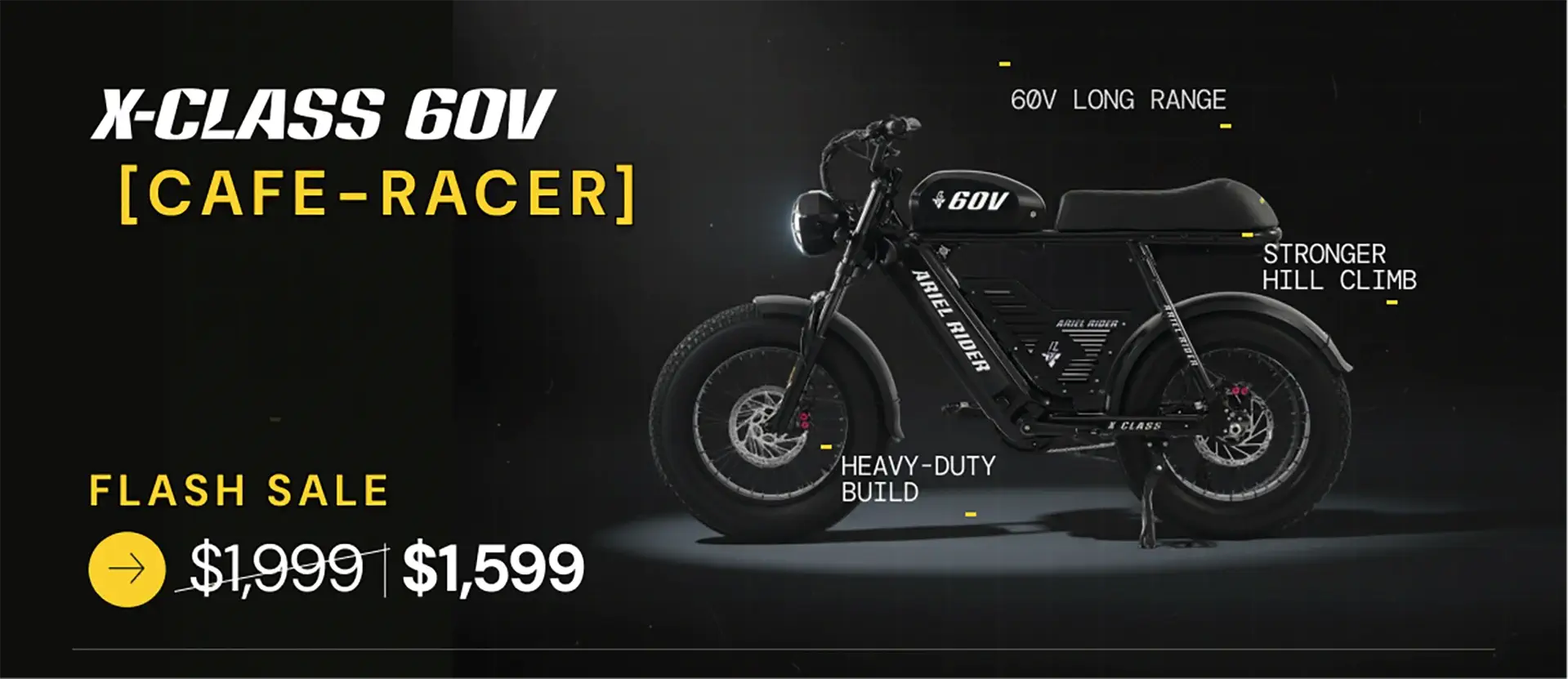Most riders brag about watts, but voltage is the reason an e‑bike actually moves. The industry loves one big number. Real performance comes from how the system pushes power through the motor. Give this three minutes. No equations lecture. No fluff.
Voltage 101. Power’s real engine
Think of voltage as water pressure. Higher volts push current harder, so the motor responds faster and pulls longer before it fades. One line of math is enough. Watts equal volts multiplied by amps. That is it. Focus on how it feels, not just the math. Higher voltage turns a trickle into a fire hose. It is not sorcery. It is electrons in a hurry.
Voltage versus wattage. The marketing mix up
Wattage can be inflated or quoted as a short peak. Voltage tells you what the system can really do under stress. Here is a simple example. A 60 V system at 35 A delivers far more real punch than a 48 V system that claims 1000 W on paper. The higher voltage bike draws less current for the same power, wastes less as heat, and holds speed when the road tilts up. That is why serious riders talk volts, not vanity.
How voltage changes your ride
Acceleration
Voltage sets the speed window and makes throttle response feel instant. Pair it with a capable controller and you get the kind of launch that feels effortless. This is why 60 V bikes often surge off the line while lower voltage bikes feel out of breath with a passenger.
Range
At the same road speed, higher voltage needs less current to do the job. Less current means less heat and less sag. That keeps efficiency honest and range more consistent, especially on rolling terrain or in a headwind. Compare energy in watt hours when you compare packs. That is the fair yardstick.
Maintenance
Fewer current spikes are easier on cells, connectors, and controllers. The whole system runs cooler. Parts last longer. You spend more time riding and less time chasing gremlins.
It is the difference between eager and effortless.
Choosing the right voltage for you
Use this as a quick guide. Match the class to your routes and your goals.
| Voltage | Ideal use | Rider type |
|---|---|---|
| 48 V | Commuter routes and short trips on flat ground | New riders who value simplicity |
| 52 V | Daily riding with a balance of pace and range | Everyday riders who want a quick bike without going extreme |
| 60 V | Hilly terrain, heavier loads, strong launches | Power seekers who want high torque without leaving bicycle territory |
Note. 60V is Ariel Rider’s sweet spot. Powerful, efficient, and battle tested on real streets.
How Ariel Rider applies this in the real world
The X Class 60 V is built around the idea that voltage should serve the rider. Voltage gives the headroom for speed. Controller tuning delivers the current that creates torque. The result is a bike that launches cleanly, holds speed on climbs, and stays calm at the top end. If you want to translate volts into miles, open the Range Calculator and compare watt hours side by side.
Keep learning. Build your voltage intuition
The takeaway. Power you can feel
Voltage does not sell bikes. It builds smiles. Once you ride a well tuned 60 V system you stop guessing at watts and start trusting what you feel. That is the point. A bike that feels eager at the light and steady on the hill is a bike you ride more.
Forget the sticker watts. Feel voltage
Take the X Class 60 V for a spin and let the science kick you in the chest. Then check the numbers in the Range Calculator.
Quick answers
Why does voltage matter more than a watt label
Voltage pushes power through the motor with less strain and less heat. That gives faster response and steadier pull under load. A watt label can be a short peak. Voltage sets the stage for real world performance.
Will a 60 V bike always have more range
Range depends on energy in watt hours and how you ride. At the same road speed, higher voltage often uses less current, which helps efficiency. Compare packs by watt hours for a fair view.
How do I pick my voltage
Match the system to your routes. Flat and short favors 48 V. Mixed daily riding favors 52 V. Steep or heavy favors 60 V. Then confirm with a test ride.




